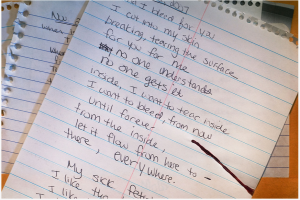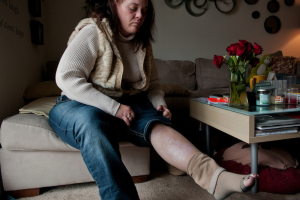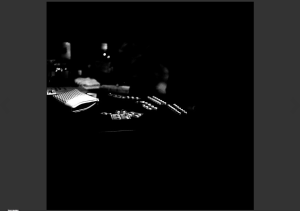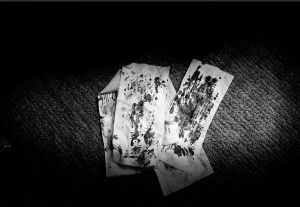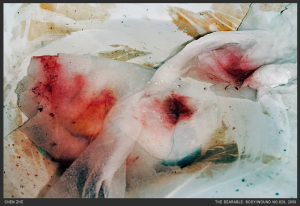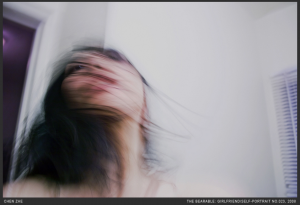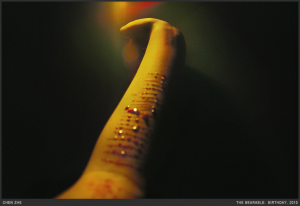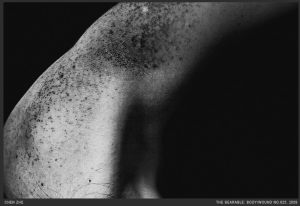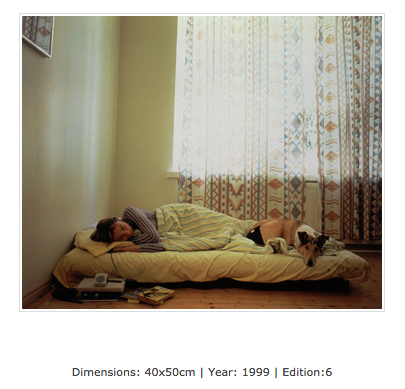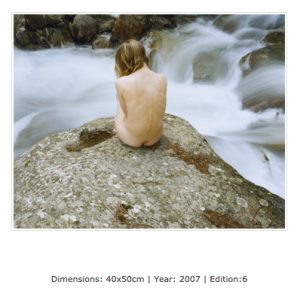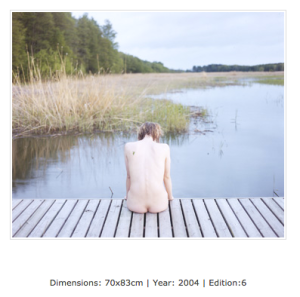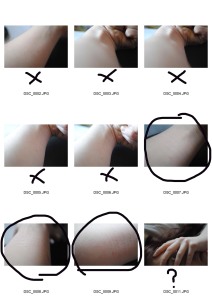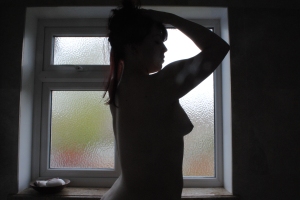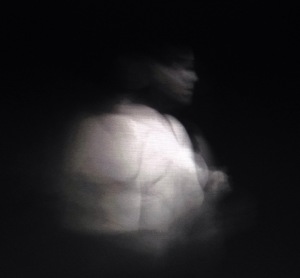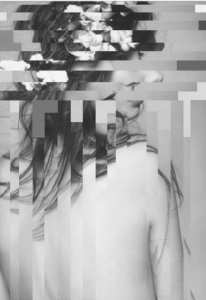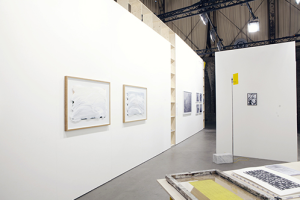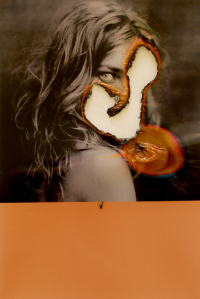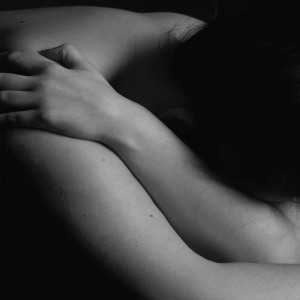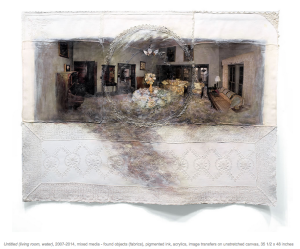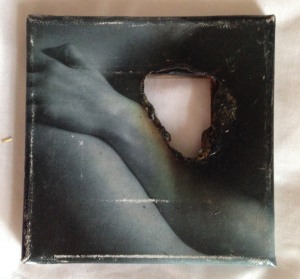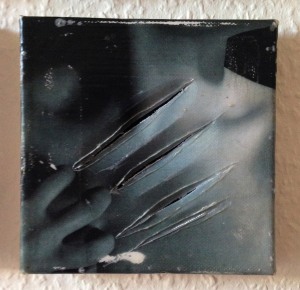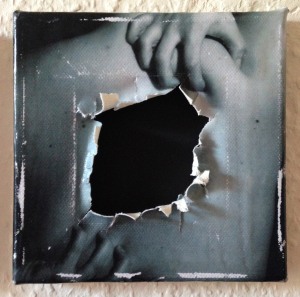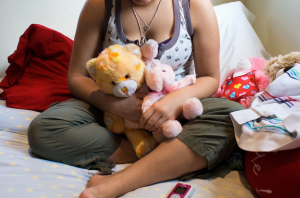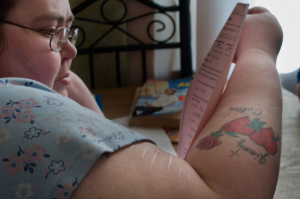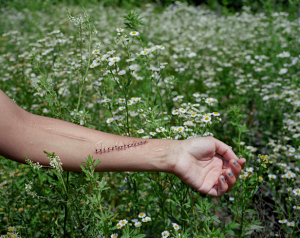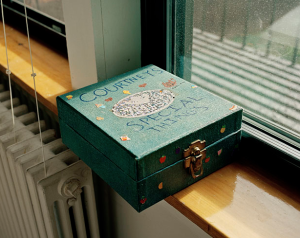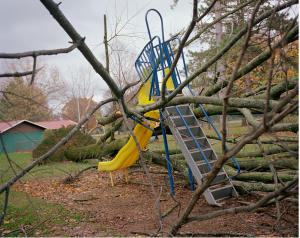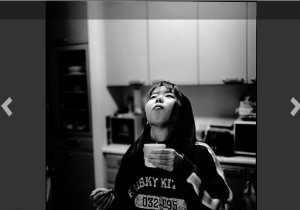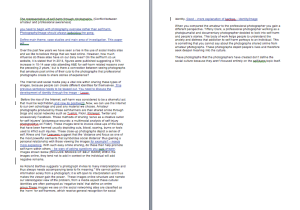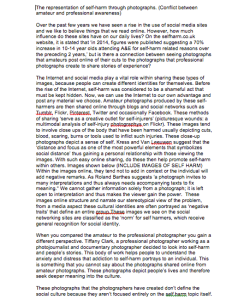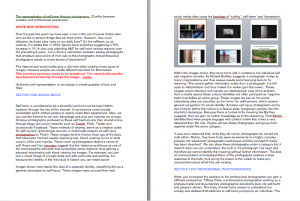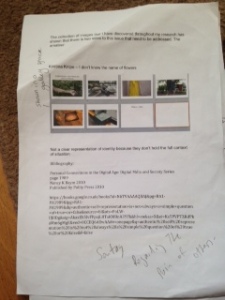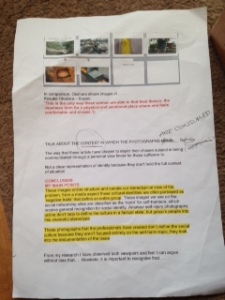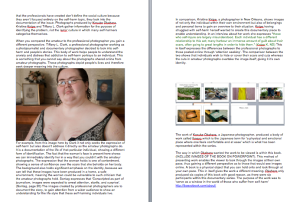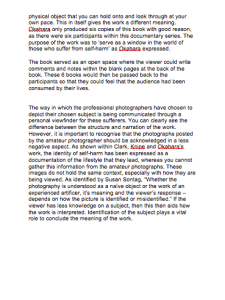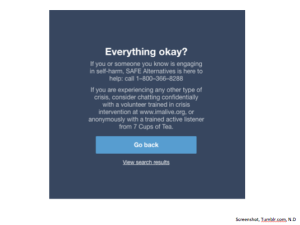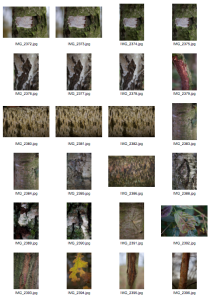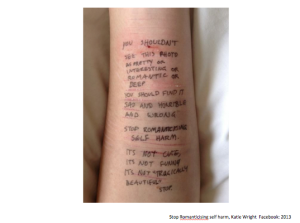Learning Outcomes
On successful completion of this module students should be able to:
1) demonstrate advanced research skills, creating a viable and relevant basis for their project;
2) apply critical analysis when communicating themes and ideas about professional photography clearly and comprehensively in visual, and written forms;
3) develop their professional independence by defining their own position clearly, with respect to existing bodies of knowledge and practice;
4) evidence a continued professional commitment to the evolution of their practice;
5) communicate effectively through an extended critically informed body of work as appropriate to a specified market;
6 ) produce high quality photographic material within a self-defined and extended body of work.
The Proposal
TOPIC / TREATMENT & AUDIENCE
Self-harm is a very well known topic but many people do not understand the concept of what it means to cause self-inflicted pain. After using Phonar as a chance to openly express my feelings towards depression and self-harming during a spoken narrative task. This got me thinking that I wanted to express my thoughts and feelings about mental health within my photographic practice. I will use myself as the candidate for the work as I feel I am best to show how my emotional pain and depression affected me on a personal level.
I will use research both from my symposium and the poem that I wrote in Phonar to help me gather ideas on where to take my project next. I will use this module to elaborate on my Phonar work and to further enhance the understanding behind the mental illness. By using landscape and nature within my previous work to explore this topic, I wanted to pull away from this and use portraiture to express emotion such as pain, anxiety, and self hatred which is what I felt most strongly in previous years. My work will consist of both studio images and photographs taken within a natural environment to see which worst best for the work. I will build a set of images to use for my image transfers onto a material, which I have not yet determined which to use. I am excited to create work that is both photographic but highlights my artistic flare by introducing mixed media into my work.
I will conduct research into photographers that have used self-harm for the basis of their work and to see how they have represented the mental illness. By researching photographers that look into self-harm, I can understand how it is being portrayed. Especially from my symposium work, I found out that many images online to do with mental disorders and self-harm were of a negative trait, so my idea is to create work that breaks away from the cliché and creates an understanding.
The presentation I hope to adopt once I have experienced with body language and portraiture to express an emotion is a physical artifact. I want the work to be something that can be seen to show texture, and explore the connection between the scars and cuts on my body and the work that will be displayed in the exhibition. I am adamant that my work is to be on a smaller scale, rather than a big print displayed in a frame. Replicating photographs is so easy to do and I want to create work that is difficult to replicate, as it is a permanent fixture. The markings on the work will represent my attitude towards self-harming on my body.
SKILLS AND RESOURCE REQUIREMENTS
This module will help me to improve on specific skills such as my research skills. I will continually be looking for new ways in which to improve my work and develop it further with new techniques. By looking into photographers that look into portraiture and documentary photography, I think this will give me an insight basis on what I need to know before I start working. It will also help develop my own narrative within my work, which is key for the topic, which I want to explore. Without reasoning or narrative, the work will simply be plain. I also want to enhance my creativity, by using photography with mixed media sources to combine and create a new type of photograph. This is something that I haven’t done before, but art was a big part of my self-harm which was my escape from reality.
Not only using the photographers and artists as a basis to learn about the techniques I want to use, but it will help me learn new ways on how to work with photography. Photograph is not just about creating photographs with a camera, but how far you can take it before it is no longer photographic. The photographs will challenge me because I am not a portrait photographer and I don’t like to photograph myself so I will have to plan shoots carefully and learn how to express body language through my images. The project will help develop my photographic practice to new levels by using mixed media in my work.
Timetable
The timetable which is shown here is that of the mandatory session we must attend for this module. In amongst it I will show when I plan to do shoots, editing and start to create my final pieces for the exhibition.
Wednesday 07/01/15
- 09:30 – 11.00 Introduction to Professional Photographic Practice: 352MC. ETG07
- 10.30 – 10.45 Break
- 10.45 – 13.00 Proposal Writing Briefing and Workshop. ETG07 / Lanchester Library
START WRITING PROPOSAL
GET IDEAS OF WHAT I AM GOING TO PHOTOGRAPH/MOODBOARDS/MINDMAPS
Wednesday 14/01/15
- 9.30 – 9.45 Registration ETG07
- 9.45 – 10.45 Individual Tutorials ETG07
- 10.45 – 11.00 Break
- 11.00 – 12.00 Individual Tutorials ETG07
- 12.00 – 12.15 Break
- 12.15 – 13.00 Individual Tutorials ETG07
COLLECT RESEARCH FROM SYMPOSIUM AND PHONAR AND LOOK BACK ON ANALYSIS OF WORK
Wednesday 21/01/15
- 09.30 – 10.00 Registration ETG07 CM
- 10.00 – 10.45 Talk by David Moore
- 10.45 – 11.00 Break
- 11.00 – 12.00 Group Tutorial 1 with David MooreETG07
- 12.00 – 13.00 Lunch
- 13.00 – 14.00 Group Tutorial 2 with David MooreETG07
- 14.00 – 14.15 Break
- 14.15 – 15.15 Group Tutorial 3 with David MooreETG07
- 15.15 – 15.30 Break
- 15.30 – 16.30 Group Tutorial 4 with David MooreETG07
START PHOTOGRAPHING AND EDIT SHOOT
Wednesday 28/01/15
- 09.30 – 10.00 Registration ETG07 CM
- 10.00 – 10.45 Talk by Emma Critchley
- 10.45 – 11.00 Break
- 11.00 – 12.00 Group Tutorial 1 with Emma Critchley ETG07
- 12.00 – 13.00 Lunch
- 13.00 – 14.00 Group Tutorial 2 with Emma Critchley ETG07
- 14.00 – 14.15 Break
- 14.15 – 15.15 Group Tutorial 3 with Emma Critchley ETG07
- 15.15 – 15.30 Break
- 15.30 – 16.30 Group Tutorial 4 with Emma Critchley ETG07
Wednesday 04/02/15
- 9.30 – 10.00 Registration ETG07 AL + CM
- 10.00 – 11.00 Degree Show meeting ETG07 AL + CM
- 11.00 – 11.15 Break
- 11.15 – 12.00 Talk by Shaun Hides ETG07
- 12.00 – 12.15 Break
- 12.15 – 13.00 Talk by Ioana Bultoc ETG07
TYPE UP RESEARCH TO DEVELOP NEXT STEPS OF DEVELOPMENT
Wednesday 11/02/15
- 09.30 – 10.00 Registration ETG07 CM
- 10.00 – 10.45 Talk by David Rule
- 10.45 – 11.00 Break
- 11.00 – 12.00 Group Tutorial 1 with David RuleETG07
- 12.00 – 13.00 Lunch
- 13.00 – 14.00 Group Tutorial 2 with David RuleETG07
- 14.00 – 14.15 Break
- 14.15 – 15.15 Group Tutorial 3 with David RuleETG07
- 15.15 – 15.30 Break
- 15.30 – 16.30 Group Tutorial 4 with David Rule ETG07
Wednesday 04/03/15 FORMATIVE FEEDBACK REVIEW
- 09:00 – 09.30 Set up work-in-progress ETG07 + ETG10 + PHOTOHUB AL + CM
- 09.30 – 10.30 Peer feedback
- 10.45 – 13.00 Mid-review Presentations AL + CM
- 13.00 – 14.00 Lunch
- 14.00 – 16.30 Mid-review Presentations continued
CONTINUE SHOOTING AND EDITING
Wednesday 11/03/15
- 9.30 – 10.00 Registration ETG10 AL
- 10.00 – 11.00 Individual Tutorials ETG21 AL
- 11.00 – 11.15 Break
- 11.15 – 12.45 Individual Tutorials ETG21 AL
- 12.45 – 14.30 Lunch
- 14.30 – 15.30 Individual Tutorials ETG07 AL
Wednesday 18/03/14
- 9.30 – 10.00 Registration ETG07 CM + AL
- 10.00 – 11.00 Individual Tutorials ETG07 CM + David Moore
- 11.00 – 11.15 Break
- 11.15 – 12.15 Individual Tutorials ETG07 CM + David Moore
- 12.15 – 13.00 Lunch
- 13.00 – 14.00 Individual Tutorials ETG07 CM + David Moore
- 14.00 – 14.15 Break
- 14.15 – 15.15 Individual Tutorials ETG07 CM + David Moore
EASTER BREAK
UPDATE BLOG AND START TO BUY CANVASES
TRIAL IMAGE TRANSFERS
Wednesday 15/04/15
- 9.30 – 10.00 Registration ETG07 CM + AL
- 10.00 – 11.00 Individual Tutorials ETG07 CM + AL
- 11.00 – 11.15 Break Proposed Capture one session 11.15 -12.15 ETG10 TBC CM
- 11.15 – 12.15 Individual Tutorials ETG07 AL
- 12.15 – 13.00 Lunch
- 13.00 – 14.00 Individual Tutorials ETG07 CM
- 14.00 – 14.15 Break
- 14.15 – 15.15 Individual Tutorials ETG07 CM
Wednesday 22/04/15 FORMATIVE FEEDBACK REVIEW
- 09:00 – 09.30 Set up work-in-progress ETG07 + ETG10 + PHOTOHUB
- 09.30 – 10.30 Peer feedback AL + CM
- 10.45 – 12.45 Feedback Presentations AL + CM
- 12.45 – 13.45 Lunch
- 13.45 – 16.30 Feedback Presentations continuedCM
RESPOND TO FORMATIVE FEEDBACK, CARRY OUT ANY WORK THAT WAS STATED I SHOULD DO
TRY MIXED MEDIA TECHNIQUES
Wednesday 29/04/15
- 9.30 – 09.45 Registration ETG07 AL
- 09.45 – 11.00 Individual Tutorials AL + Emma Critchley + David Rule
- 11.00 – 11.15 Break
- 11.15 – 12.30 Individual Tutorials AL + Emma Critchley + David Rule
- 12.30 – 13.30 Lunch
- 13.30 – 16.30 Individual Tutorials Emma Critchley + David Rule
FINISH FINAL CANVASES TO GAIN FEEDBACK FROM TUTORIALS
Wednesday 06/05/15
- 9.30 – 09.45 Registration ETG07 AL
- 09.45 – 11.00 Individual Tutorials ETG07 AL + CM
- 11.00 – 11.15 Break
- 11.15 – 12.30 Individual Tutorials ETG07 AL + CM
FINAL TUTORIALS TO GAIN FEEDBACK ON FINAL PIECES, CARRY OUT ANY CHANGES THAT NEED TO BE MADE TO WORK
COMPLETE BLOG WORK
Wednesday 13/05/15
- 9.30 – 10.00 Registration ETG07 AL
- 10.00 – 11.00 Individual Tutorials ETG07 AL + CM
- 11.00 – 11.15 Break
- 11.15 – 12.15 Individual Tutorials ETG07 AL + CM
- 12.15 – 13.00 Lunch
- 13.00 – 14.00 Individual Tutorials ETG07 AL + CM
- 14.00 – 14.15 Break
- 14.15 – 15.15 Individual Tutorials ETG07 AL + CM
PREPARE GALLERY READY FOR SUBMISSION ON THE 20TH MAY – 9AM
OBJECTIVES AND OUTCOMES
By the end of this project, I hope to have opened up the audience to a inside view of someone’s struggle with self-harm and depression. The work is to be used as a positive outcome towards the mental illness, rather than shameful. I hope that the work is engaging and people find it interesting to look at and highlights my struggle through my creative techniques. Through analysing my practice, I can learn to select successful imagery that portrays my concept. I want to create work that is universally understood, and helps to express what I am trying to say without having to go into detail on what it is about. Contributing to the vast community of self-harmers and to see my work as a positivity towards the road of getting better. My work should be encouraging to other people suffering from mental illnesses to show that they are not alone, and that it is important to share our experiences through a means of self help.
Phonar Work
https://kerriecaine.wordpress.com/2014/12/02/spoken-narrative-development/
Some of my work that I had produced for a previous module this year was also about self-harm. However, I had taken an alternate route to create my idea. I had created my work with a metaphorical sense rather than literal. I used the natural environment and trees to express the look of self-harm. The images within the booklet that I created were of various different trees, which symbolised the different people affected by, self-harm. The markings on the tree were metaphorical for the self inflicted wounds upon those people and myself.
I chose to photograph trees because I didn’t feel comfortable to photograph myself, it was also easier for me to do still life images that portraits because I don’t need cooperation from an object like I do with a person.
Tiffany L. Clark – A Release: Stories of Self Injury
Clark is a photojournalist and documentary photographer that looks into describing the world through the lens. When I came across this work of Clark’s, the purpose to this work was to raise awareness on how the self-harm and depression took over people’s lives. This body of work was the documentation of four different women who suffered with depression, anxiety along with self-harm. The set of images came with a brief artist statement about the work. This would help the audience to engage and understand the purpose of the work and to see what it was that Clark was trying to represent.

From the image on the right, I noticed that Clark had decided to photograph her participants in their own environment, documenting their daily lives. I found this interesting because even though this project is about me, I don’t feel that self-portraits in my home would do the idea justice.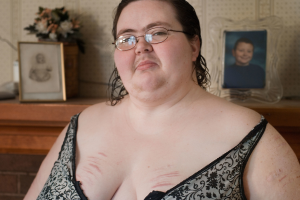
To gain participation from the women that she photographed, they must have been very content with their way of life and that they self-harmed. Natural lighting gives a smooth glow to the portrait but highlights the scars that are present on the woman’s body, giving the scarring a small section to the image defines that it’s not just an act of cutting, but a physical harming to another human being. It makes people question how could someone cause pain to themselves.
I have noticed within this body of work that the scars and cuts tend to take on the photographs whole frame and you don’t really get a true look into the persons facial features. It gives it the idea that these cuts and scars upon the body could be on anybody.
This idea of documenting the women’s surroundings helps to add in context to the lives they lead. Creating still lives opens another window to expressing what kind of way they live and how they think.
I like the way that Clark has photographed these women because it shows consideration for their stories. Privacy doesn’t seem to be an issue here because the participants look comfortable. It opens a world to people that have never experienced self-harm first hand.
Reflection:
By looking at Tiffany Clarks’ work, I discovered that the approach that she had was very direct in what she wanted to represent. I don’t think that I will directly use my scars within my own work but it could be something that I try to see what it looks like. The aesthetics of the image work well, and it could be something I try. By taking images within my home to look at to see if that would be the right way to go for my work to help express my emotions towards self harm and how I felt. The natural lighting needs to highlight my body. I’ve also decided that I’m going to try self-portraits because that way I can look at my own representation of the act.
Kosuke Okahara – Ibasyo
Ibasyo is a project that Okahara began back in 2008 which documented the lives of 8 Japanese girls that suffered from anxiety, depression and self-harm. The photographs produced in this body of work are very self explanatory but the approach in which the work was made is similar to that of Kristina Knipe and Tiffany Clark that document the lives of the individuals.
This one image from the series stood out for me because I knew I could relate to it. From the times when I was self-harming, I would cut myself so severely that I would have to stop the bleeding somehow so I would use tissues so that I could easily disregard them afterwards so no one would find out. This image on it’s own doesn’t openly express that it is about self-harm but the dark lighting expresses a dark emotive response.
Even though I am not going to document another person’s story, and depict my own in my work. I think the dark nature of the photographs is what I like. The bold black and white tones give a more alerting sense of emotion. The darkness relates to the dark emotional pain that I felt during depression and I think the aesthetics of an image is what gets the viewers attention.
Zhe Chen – The Bearable
(http://www.zheis.com/The-Bearable-Photograph)
I came across this work by Zhe Chen when I was looking for other photographers that looked at self-harm as a main topic. I decided to look at this work because it stood out to me. It’s very bold and raw. Both colour and black and white photography has been used for this body of work but I find both have unique qualities. The still life image below stands well on it’s own because you can tell what is present in the photograph. The colouring adds in context that it could be blood from the cuts.
The blurring technique that Chen has adopted here doesn’t quite fit the rest of the body of work but standing on it’s own, I find that it’s mesmerising. It’s obvious that this is a portrait but the blurring adds an element of haziness and clouded mind. I can relate to this because it is a feeling that I felt during my depression. This particular image captures an emotional essence of someone.
I’ve chosen to look at the work from Zhe Chen because I thought it would help aid whether I would want to do portraits or still life photographs to portray self-harm. This photographer in particular uses both to document the life and story of the individual. The images themselves are very striking and of high contrast which I think helps to capture the striking nature of the topic. The bold colouring and unusual angles make you look at the image. Because the images are of cuts of the body you get an uneasy feeling, which is quite powerful. Using photographs to depict pain is a powerful tool because this heightens people’s senses. This is because we all feel emotion and pain. The depth of the images also gives it a powerful status the soft focus with sharp focal point highlights the main feature to the work. I do feel that the colour images work well but I must rather the black and white. This feels like there is more texture and documentary style, which I want to adopt with my own work.
What I Be Project
http://www.whatibeproject.com/portfolio-types/self-harm/
The ‘What I Be Project’ was a website that I stumbled across that took on a self-help type of online community. Within the website, you can click on different categories such as eating disorders, self harm, sexual abuse and disability. The online platform is used to openly share portrait photographs of people that have suffered with said categories. They are told to express themselves how they choose, and present this in a portraiture image.
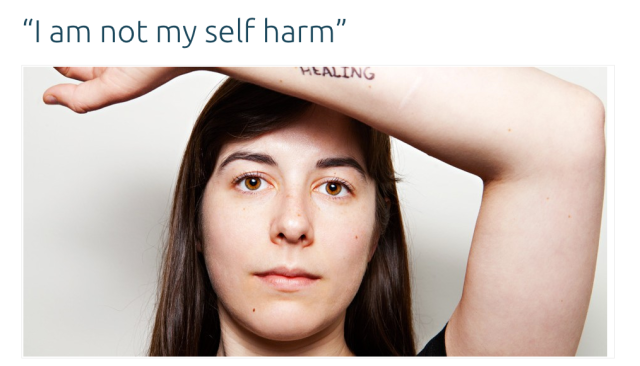
Scars are funny things. I should know; I’ve managed to amass a collection of them well into the double-digits, scattered all over my body. Some are a natural consequence of being alive: I have a really gnarly one on my knee from a dugout misadventure back when I played softball, for instance. But the vast majority of them were put there, by me, deliberately. I chose to come out about it because I know other people–a lot of people–are struggling with it too, and because I’m achingly tired of lying by omission. (Concern and laziness are two of my hallmark qualities.) Even after two years of recovery, talking about my own experience with self-harm isn’t an easy thing to do. Telling people that you used to burn holes into your skin (but you’re better now) generally doesn’t illicit the same chorus of hurrahs that beating other illnesses does. It usually just makes people uncomfortable, and perhaps a little bit edgy when they talk to you, like they’re handling an ugly Faberge egg. After all, you can’t re-break a person’s leg if you say something mean to them, but you could possibly make them relapse. What do you do when handed that information? It’s like being told of a tornado that touched down years ago in the area, but most of the damage is repaired. What do you do in that situation? What do you say about the natural disasters that befell me in excess, now that the sky’s clear? So, I do understand. I understand why most people didn’t say anything when they saw them, too, although I do have a great deal of fondness for the handful of people who did know and did their best to get me healthy. Nobody asks, because asking invites confirmation of the worst-case scenario. Not verbally, anyway. But I saw it in every concerned glance that was thrown at me, and every touch that was done with exacting gentleness, as if grabbing too hard would make them re-open. Yes, they’re what you thought they were. Yes, I stopped. Yes, for the most part, I’m okay now. Which leads me back to scars. For a long time, I was ashamed of them. After all, it’s not like they’re really ambiguous; a collection of long white marks all over your forearms like mine does not leave a lot of room for interpretation. Then, after a while, I began to accept them. They became another part of me, like my shock of white hair and my droopy eyes (which I have been staring at for about twenty minutes now, and my god, they look weird). Gradually, they began to lose their status as shorthand for my own abusive relationship with myself, and became a symbol for my ability to heal. Healing is, after all, something unique to living things, and no matter how badly I trashed myself, I would see, weeks later, that it had healed. My own mental wiring notwithstanding, my body seemed perfectly fine with knitting itself back together, and waiting for my thoughts to catch up. Which they eventually did. I spent a good deal of time waffling over what I was going to write on myself. “I am not my burning,” was considered, but it was ultimately voted down because of my aversion to gerunds. “I am not my self-harm” is true, and, to my eye, more to the point. My self-harm was a long episode in my life, but it composes only a small part of me. I am still someone who loves my friends, loves dogs, gets annoyed by the NPR pledge drive commercials, and (I like to think) is a pretty snappy dresser. My injuries and recovery are one part of me, but they do not mitigate the wholeness of my identity. They’re another part of it. Everybody has scars. Some of them are there by accident, some were put there by other people, and some of them we put there ourselves. It’s impossible to change the circumstances of how you got them, but you have the power to define what they mean to you. And in my darker moments, mine serve as a gentle reminder not that I suffered, but that I survived, and that I can survive this, too.
The text that accompanied the image was descriptive and expressive about how they had recovered and survived the likes of self-harm. Placing a piece of text written by the person brings a more closer element to the work. It helps you gain an insiders perspective on how it affected them.
Even though this work is interesting, I don’t want to go down the route of using text on my images, I want the work to express themselves without words.
Jo Spence
Cancer Shock
This work by Jo Spence spoke to me personally from having family members die from cancer. I think her clever way of using montage to express the difficulties and her progression through treatment is extraordinary. The use of text helps to create a narrative about what the image is about. But what I noticed with this body of work is that it’s shocking and makes me feel a little unsettled to look at, so Spence certainly managed to create an emotional response from a viewers point of view. Whether this is because I have known people with cancer or I just feel for her, but it’s just as important to think that my interpretation may be different to the next persons.
The composition of the images is very central, there’s no fancy camera techniques or editing. It’s a clear, visual expression of the emotion that Spence had felt towards the cancer. The mask over her face appears to be a symbol for her hidden identity, which could mean she is trying to hide her emotion behind the mask.
I don’t think I will use the approach of montage within my work because I don’t feel interested in it enough.
Evaluation & Next Steps of Idea
After looking at the artists and photographers that I have, I found that the theme was to go down the route of portraits. The next question would be, do I want to do self-portraits or do I want to find participants that share this self-harming act and photograph them and their stories. I considered using people that had self-harmed, but I thought that this might be difficult to do because I’d have to find participants that would cooperate with what I wanted my work to be about. This is when I decided that I was going to do self-portraits of myself. I knew this would be difficult to do on my own so I will try to use my camera with a timer and see what results I get from this.
Elina Brotherus
Self-portraits
During one of my tutorials, I was told to look into the work of Elina Brotherus. I had never heard of her before and when I searched for her work, I was quite interested in it. I found that the soft lighting is what stood out to me. This particular work from the series ‘Self-portraits’ was one I connected with. The idea for this work was to express emotion and feelings within a landscape. This was something that interested me, the fact you can use lighting and body language to express an emotion through a photograph so you can read the image more clearly.
Within the image above, which I found was one of the stronger from the series, expresses a deep thoughtful process. That the emotion trying to be identified is one of isolation but thoughtful at the same time. The yellow tones and soft lighting express a mellow approach. The crop is wide which lets you understand the environment that the participant. I can relate to such an image, listening to music to gain a calm mind, like an escape. Even though I get a feeling of sadness from this image, I find that the light highlights a brightened future or part in their life. Even though the image isn’t dark, which is what people like to associate negative emotions with, I think the photograph has been very cleverly composed.
This next image is the same composition as the one above, however by removing some of the subjects from the window and placing the curtain across, you gain a different perspective to the image. It’s darker than the image above, which has a different effect. The model is under the covers this time, maybe a sign that they’ve given up on something or is mentally drained. The solitude of the image gives me a sense of self-expression which could help the viewer to connect with the concept behind the emotion.
The second body of work that I explored by Elina Brotherus was this called ‘Model Studies’. I liked this series because it was very isolated within a landscape. Within the short statement about the work is became apparent that there was no storyline towards the work but it was open for interpretation. Something that captured me was that the work expressed someone from behind rather than the front. The viewpoint for this work was to show relaxation rather than confrontation which is what you sometimes get with images of people from the front. I didn’t get that from this work, I got a very lonely feeling from this work. The fact that the model is always photographed from the back suggests to me that there is a sense of isolation. The images are either of the woman looking forward, which looks hopeful but the other two images are with the head pointed down, this gives you a different view. Looking down and away from the camera gives a vulnerable state of mind to the viewer. Making us think, why are they looking away? and why can’t we see what they look like. By not being able to see there face can make us impose our own identity onto the subject matter.
Another point to consider is why are all the images nude rather than clothed. I think when you photograph somebody with clothes, they are fully open and expressive but without clothes you are becoming vulnerable to criticism. I think showing the naked body opens new boundaries, and with this work being naked within a landscape speaks out loud. It’s unusual to see people naked outside, it’s vulnerable and hypnotic. The soft lighting, body language and the fact that it’s shot nude is what interests me about this work. These are the main factors that I will take away from this work, and adapt it to suit my topic.
Shoot One
For my first shoot, I decided to do some basic images to see if they worked well. I had visual ideas on what I wanted to photograph but I wasn’t sure if they would portray what I am trying to say. I had decided to do self portraits because this would best portray what I wanted to say on my feelings about self-harm. The topic wasn’t so much about the cuts because I have been clean for 3 years now, it was more about the aftermath and the emotional strain it had on my body. I took photographs of my scars on my arms and then tried to portray my inner feelings on how it makes me feel when I am having a low spell. In my
The soft lighting within these images is what gives it the atmosphere. I particularly liked the image below because it became a piece of texture rather than a flat image. Even though it wasn’t so clear as to what it was, you could tell it was skin somewhere on the body. The black and white fitted the image better than the colour because it didn’t really capture the scars and the colour difference between the skin and the scars. Because I was only photographing certain things, it was very restricting on how much I could photograph and what I could try so it was a difficult shoot to do, especially as I did this on my own with the timer setting on my camera.
I cropped the images into squares because they become more interesting to look at than a regular landscape image. I think the tight crop gives it a more intense and in-depth viewpoint. With the image being cropped so tight, it makes the viewer have a strong main central point to look at and this is what I wanted. I wanted the viewer to look into the image and see the different tones and lines on my arm. What I did learn was that the subtle, soft lighting, like in Brotherus’ work works best as it highlights the main focal point I am trying to get the viewer to look at.

The second image I decided to crop was the one below. Even thought there is blurring to this image as i was on a tight timer setting on my camera to press the shutter and get into position. I think it gives a nice soft approach, which works well for this image. This image is also in black and white because I feel that it gives more depth and definition because it picks out shadows and highlight better in the image. The body language I was trying to portray was that of struggle and isolation. By portraying the way I felt within my body language I hoped to express to the view the emotions that I went through. For a first shoot, I don’t think that it went too badly, but there was definitely room for improvement. I also photographed the image below naked because I wanted to be vulnerable which is what I felt during my times of depression and self-harm. The idea of vulnerability to the emotional struggle that I felt is to be portrayed within my nude self-portraits.
From this shoot, it was clear that I wanted to shoot nude because it worked best I felt. Being clothed wasn’t much of an option because clothes can sometimes get in the way of what you are trying to say. Using my body as a blank canvas to photograph is my intention here. I do feel that I will continue to shoot and edit with tight crops and black and white images because I don’t colour to be a main attraction here, I want texture and shadow to be my main enhancement to the image.
Shoot Two
With my second shoot, I wanted to explore the naked body and the mood of an image through the lighting. I had an image in my head to use light from a window which gives a soft light because the glass acts as a soft-box and dispenses the light more evenly. I used this lighting to photograph nude, but I was particular about how I photographed myself. I used the self timer once again to do this shoot on my own because I wasn’t comfortable to get nude infront of anybody. The soft light highlighted my body and gave a tranquil look to the images.
I picked out a few images that I liked which are below:
This image wasn’t what I was going for because I don’t feel it portrays the idea that I wanted to talk about in my work.With Elina Brotherus’ work, the nudity in the images was more emotive than my work. I found that these photographs were very flat. I knew that I had to scrap this shoot from my final pieces because they wouldn’t fit in with my previous shoot if I were to use any of the images from the first shoot. 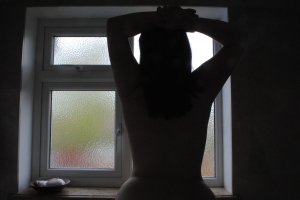
The last image from the shoot was the better image, because it was apparent that I was using my arms to hold myself, like a comfort blanket as to not reveal myself to the world. It’s not as open as the other two images
Shoot Three
Shoot three was different to the other shoots I’d done. My mindmap that I created about self-harm was full of feelings and emotional responses I had towards my time with depression. One of the emotions I felt was one of uncertainty and haziness. My mind was very clouded which gave me bad judgement, making me unsure on what was real and what was right from wrong. I wanted to portray my emotional pain with blurred images. The images were different to my previous shoots because they were unclear on my identity. The movement was to symbolise my state of mind, only a couple of the images worked because they were either not blurred enough or didn’t have a rhythm to them. My composition of the images was to be centralised, so it was a focal point to the image. I also shot these in the studio to see if the setting would change the atmosphere. The black backdrop was used because it was a dark topic, I think using a white backdrop would highlight too many features and give a different view.
This shoot was very different from my other shoots that I had done. The reason that I had decided to try long exposures was that it could display my clouded mind and judgement. When I had depression, it’s like I didnt realise what I was doing to myself and it didn’t bother me when I was self-inflicting pain.
Moodboard & Research Of Mixed Media Techniques
Cornford & Cross, Andrew Lacon and Stuart Whipps – After the Image
During our lectures, I was introduced to a set of photographers and artists that used copyright to enhance their work. What they did was buy the copyright of certain images and once the copyright was up they painted over the image because it would be illegal to present the images without renewing the copyright licence. This work was shown at Amsterdam during the Photography Art fair Unseen in 2014.
I found this work to be quite interesting because even thought it was both photography and art it highlighted my idea to combine the two together. The photograph was erased from the frame and made it difficult for the viewers to interpret what they were looking at. The texture of the paint on the photograph gives a new context, whereas before the image would have taken the front role to display the image. However, the paint becomes the centre of attention to the image. I like this idea that the photograph isn’t the main point to the work. I think this is something that I would like to take away from the work. Making physical work is what I am most interested in, and because of the context of my work for being about self-harm. I find that if I made work that could easily be replicated then there would be no singularity within my work. I want to be able to create work that is individual to me.
Another set of work produced by Cornford & Cross, Andrew Lacon and Stuart Whipps is this installation above called ‘A Month in the Country’. From the title it is evident that the work is of landscapes, but this idea of painting over the image takes away from the beauty of the landscape image. The texture and the colour of the paint takes the role of the photograph to a new level, making it seem that photographs are easily replicated on a daily basis. This is what I want to steer away from.
The installation of the images is interesting because it has been framed and situated within a gallery space on blank white walls. Because the images are painted white, you can still see the image slightly underneath but if you look at the work in the gallery space it doesn’t stand out as much because they have tried to erase any trace of what is there. The gallery space looks blank and empty just with four single frames. I think I’m going to have to be careful how I used mixed media within my photographs because I don’t want to take away too much of the image that you can’t see what you are looking at. Experimentation will allow me to see which works best and which I can adapt to help enhance my work further.
Lucas Simoes – Absence, Nostalgia & Who Play With Fire
Whilst looking for photographers that used mixed media, I came across Lucas Simoes who did 3 series of work that involved the act of burning photographs. When I looked through the work first before reading about it, I took away my own response to it which involved the idea that burning a photograph is to erase something, but I noticed that the work was self-portraits so made me think that the person burning them was maybe trying to get rid of the individual within the image itself.
Upon reading about the work, it was apparent that the artist had no relation to the photographs and they were sourced from different media. These photographs were to show the erasing of memory and time, symbolising that with time memories will fade.
Absence:
The three images above came from the series of work called ‘Absence’.
Something interesting that I found with this work was that they are all in black and white but have very distinct tones and colouring. The fact that when the images have been burnt, it hasn’t completely got rid of the image and the first and last image actually still have physical features showing such as the eyes of the person. It acts as a personal gate to look at the person. However, What I find most effective are the images that completely erase the persons facial features, I think this is because we cannot simply look at it and know anything about the person other than what they are wearing. Within the middle image, the bubble and and slight crinkling effect works well.
I also feel that I can try this with my work because it was something I used to do to myself. The physical markings on the work are what make the outcome interesting.
Nostalgia:
The next set of images that I looked at from this photographer was of a similar context to the previous work but the consideration for which photographs she used was highlighted. I found that the images from the ‘Nostalgia’ series seemed more personal because the photographs were more intimate. I like how Simoes destroyed the images; the fact that the faces of the people have been destroyed or marked in some way suggests that the identity needed to be hidden. By hiding the identity or face of somebody, as a viewer I see these images of struggle to be more personal to me. If I can’t see the face within a portrait photograph I can visualise myself in the situation. The images here I can see myself feeling the emotion they display through the body language displayed. The tight, scrunched up pose suggests a feeling of being trapped, or solitude. The body of work seems to hold a upsetting tone, which reflects the title. This idea of nostalgia imposes memories that we may not necessarily want to remember or they are clouded. The burning makes me feel it’s anger and pain expressed in these photos whether that was Simoes intention or not.
Who Play With Fire:
The same goes for the work ‘Who Play With Fire’ however, this work seems to look at the individual within an environment such as a home. This gives another context that the photographs are somehow snapshot like because they don’t appear posed. But you couldn’t quite know without the photographer telling you why or how they took these photographs.
The thing that I will take away from this work is that I know what subject I would like to photograph. I have already decided that I want to create this work on myself. But I need to consider whether I want to take self portraits in my home or within a studio environment. The thing that stands out for me in this work is the body language in which the people are posed.
When doing my next shoot, I need to consider the location and the body language that I am going to portray because this will play a vital role in giving the audience an understanding to my work. I also need to consider how to take the photographs in conjunction with making them into canvas prints and creating texture onto them to mimic the reality of the cutting on my skin.
Shout Four
My final shoot for this project was one done in the studio in front of a black backdrop because I thought the images look best that way. Including my environment within the image was a good idea and it did create some atmospheric photographs, but I preferred the plain background to signify the emotional cloud in my mind. I set out to do this shoot with a friend so that I could get the shots and compositions that I wanted.
New edits
Sally Mankus
http://www.sallymankus.com/mixedmedia.html
Sally Mankus’ work is very different to any of the other photographers and artists that I’ve looked at previously. She works with mixed mediums to create her pieces of work. It varies from photo transfers to using acrylic, fabric, metal and wood. The texture, colour and contrast to the work are what stand out to me.
The second image that I looked at used image transfers onto fabric. I have never worked with this type of media before because I had always printed my work onto photo paper to be displayed in a gallery but when you add in texture to the work it makes it become more realistic. Something that you can touch and experience rather than just to look at.
One of the images in particular was an image transfer onto hessian fabric, which is what they use for canvas’. The tones of the image looked subtle, they were in your face, and it appeared quite peaceful. Even though the idea behind the work isn’t related directly to my topic, the making of the work was what I was interested. To create the work, it had to have taken time to make it, creating a more personal piece of work that was considered. The different textures on the work is what attracts me to look at the work because of the tones and effects.
Formative Feedback Review
After having our final feedback review just a few weeks before the hand in date, I displayed my work with images I had taken and put forward to the group the route in which I wanted to present my work. As I had forgotten my canvas that I had created, I showed an image of the canvas image transfer. I was quite surprised at how accepting people were of this idea considering it’s nature and not a professionally printed image. One of the comments I received was that the canvas idea was good because it would create a rough finish. This is what I hoped for because I knew that from this work I wanted to create work that had a unique quality, I didn’t want anything that could be easily replicated like a normal jpeg image can be. The hands on approach to making the work was the main focus and it’s great to see people saw my thought process to get to the idea.
There were a couple of critical comments that I am going to take on board to help advance my work further.
It was clear that because I was using a box canvas that the white edges didn’t look quite right, so it was said to maybe fully wrap the canvas when doing the image transfer so the canvas looked more complete. I could also try painting the edges black to create a framing aspect but I’m not entirely sure on this idea so I will give a trial and error. I must also try various different ways in which I could create the markings on the canvas to see which works best. I am very pleased with how the review went because it was positive. To gain more feedback, I should be create the rest of my canvas’ so that people can see the collection of work to make proper judgement.
Mixed Media
My next step of development for my work was to look into mixed media. From my previous moodboards and looking at artists and photographers that worked with mixed media, it became apparent that texture was a main point to express in the work. From my final edits that I had narrowed down to use for my work, I knew that I wanted a small number of smaller images up in the exhibition, this was because I wanted things to be more intimate and the smaller detail would mean the viewer would have to look closely at the image and consider what they are looking at. To create my image transfers, I considered getting my work professionally printed onto canvas but if I am going to destroy them in various ways, the cost would be high and having the images crisp and clear wasn’t my intention. Even though I had considered what I was photographing and the body language I was portraying I had to make sure they worked in the flow on how I wanted to mark my work. I was very determined that my work was to become a physical artefact, a piece that was to be used as a metaphorical outlook on self-harm and the aftermath of the illness that had taken over me. Because my work was solely to do with the aftermath of my self-harm, I thought the way I would make my work would be to make aftermath pieces to express my feelings.
The equipment I used to create my final pieces of work:
- 15cm x 15cm stretched canvas
- mod podge
- image maker
- craft knife
- laser printed images
- sponge
- water
- latex
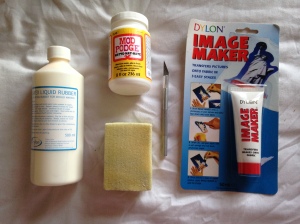
My first instinct was to use the image maker which was known to be able to transfer any image onto fabric and canvas. I thought because of how Sally Mankus had created her work that I could do the same thing. I also chose to work on canvas because, with art it becomes a physical piece of work that you create yourself, you essentially make the art work by acting on the canvas.
Draft Canvas’:
My first couple of canvas’ was to look at which medium makes the best image transfer. I looked at both the image maker and mod podge which is a glue. This was to see what would create the best results. When creating my work, I had to consider whether you could determine what the photograph was, and whether I could transform it into a final piece that was of a high standard. I knew that it would be time consuming to do as you have to let the canvas’ dry for 8-12 hours for the best results. After this you would have to wet the paper to rub it off to reveal the image underneath. After much time and patience to create the two canvas’ above, I had to decipher which method worked best.
Image maker:
- Image was clearer
- Didn’t peel off as much when taking paper off the image
- Had a nice graduate faded effect which was nice, as if it were a fading, distant memory
- A smooth finish
Mod Podge:
- Left bubble marks where the paper didn’t fully flatten onto the canvas
- Image started peeling off easily when trying to take the paper off
- Was easy to peel off
From the two pieces, I found out that the Image Maker was so much better at creating the pieces how I wanted them to look. I decided to carry on using this method throughout my research and development on the canvas. I then continued to do the rest of my image transfer with the image maker and compiled a variety of canvas’ to experiment my different techniques on. I have decided to use 2 different methods of markings on the canvas, these include cutting and burning which represent the physical act of what I did to myself.
The image above shows the first canvas that I made which involved cutting the image. This was to replicate the cuttings on my body, which coincided with the image. The whole idea of using my naked body was to mark it in a way I would’ve done. The canvas’ are to be made that if people wanted to touch it you could get a sense of feeling for my skin and how it marked me. I think the cutting was effective but it didn’t quite stand out for me so I knew that this was something I would have to develop with another canvas. 
My next thought towards the cutting on canvas was to use a medium that replicated the texture and feeling of skin. The only thing I could think of was to use latex because it is what they use for make-up and visual effects. The image above looks at how I used latex to replicate my skin. I use a brush to evenly layer the latex onto the canvas, which took 5 coats to create a clear consistent layer. Latex is a material that is easily changed, by using my finger I could open up the cut that I made on the canvas which made it look as if the skin had peeled away and opened up the wound. I found this rather effective and this is the type of final outcome that I wanted to end up with.

My next idea was to use my back image to slice through the canvas and created a hole in the image which was of my back. By cutting through the image I replicated the hole that I felt, a deep sickening feeling that felt lonely. I left the edges to the open cut pointed because it was more destructive to look at than if I were to have use smooth, clean cuts.
The next canvas looked at burning. It was difficult to complete this technique because it was difficult to get the canvas to initially start burning. Once it started burning, I noticed that the Image Maker had started to bubble and discolour on the canvas. I like this because it was a permanent change to the image which worked nicely towards the lasting effect of scarring on my body. The act of burning is a irreversible technique which doesn’t change. Both the burnt and cut open canvas have big holes in the which meant that self-harm left a big void within my day to day life, and the scars were forever branded onto my body to remind me of the times I went through trauma.
With one of my images that I tried to mark, it didn’t quite go to plan. Because the image was only slightly visible, with texture coming through the image of the scars on my arm I disregarded this technique for this particular image. I covered it in latex and cut over the scars that I had photographed, which meant you couldn’t see what the image was anymore, it wasn’t very clear. From doing this, I thought that it would be best to leave the image as it was because I liked the photograph on it’s own. I think it was a strong image that stood by itself, the soft lighting that highlighted the scars on the side were what made the image so if I was to cover it up with a technique that I was using it would take away from my photograph.
With the latex image, after it was created and finished, I noticed that when it got knocked the latex was moved. I then knew that I had to do something to the canvas that would permanently fix the latex into place. I thought I could use either a glue to fix the image or a spray fixative. I decided against the spray fixative because it had a shiny finish on pieces of work that I had previously looked at. 
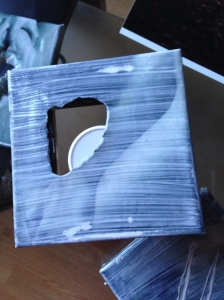
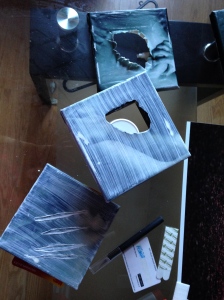
After I had completed all the image transfers and got them to the best of their appearance that I was happy with, I used the Mod Podge glue to fix the work and to make sure that if they were knocked they wouldn’t get ruined. This was my final step in finishing my creative mixed media pieces. I then had to wait another 12 hours for the images to completely dry and be ready to be mounted.
Final Outcomes
These four images are my final pieces that I am going to exhibit in the gallery. I am very pleased with how they have turned out and feel as a set of work it expresses my feelings and markings on my body that I created. These are my final pieces, but I am unsure on how to mount and which images to use and where. Because I have only marked 3 of the canvas’ and one is left blank with just a photograph, I feel that it stands out a little too much from the other pieces of work. This will be something I consider when I have tutorials next with my lecturers.

Tutorials About Final Pieces
When I had completed my final pieces, I took them in so that my lecturers could see them in their final form. They weren’t complete fully because they were missing the black backing to cover the holes in the work. I figured that the white background didn’t fit well with the work. By adding the black back to the images it became apparent that it enclosed the images, making them feel tighter and more focused. Black is a very prominent colour to use because it brings a darkened atmosphere, white is too highlighting.
When I spoke to my tutors, they were pleased with the work that I had created. I expressed that I wasn’t so sure on whether or not I want to use all four of the prints or to leave out the only image that didn’t have any markings on. Anthony said I should keep the image in, and Caroline liked the image because of the lighting that I had used. It became apparent that from my peers, I should keep the print in because it gave a nice break for the work to flow nicely. My next step was to see what order I would display my work. The process on making the work was long and tiresome because I had to wait for them to dry before I could move onto the next step, but I’m glad that I decided to produce my work in such a way because I don’t think you would get the same effect creating the images digitally. Making physical work that I had destroyed to symbolise my body gives a more emotional response.
Trial Run of Presentation Techniques
My final outcomes were image transfers that I created using image maker onto canvas. This method of working helped me to create work that was personal to me. Every mark I made on the work create the emotional connection I had towards harming my own body. 3 of my images have been marked in some form to represent the nature of my self-harming problem. I used to cut and burn myself, and this in turn is what I did to my work. It was a surreal feeling to watch my work be destroyed, but this was in affect what I was doing to myself. To destroy something so valuable, that I took time to create.
The order of my prints in the exhibition would be critical to how the viewer would look at it. I then set out my canvas’ in different ways to see which would be the most effective for the photographs to work as a coherent set.
Exhibition Layout
Like I had previously stated, I wasn’t sure whether or not I wanted to use 3 or 4 of my final canvas’. After laying them out in the selection that I thought worked best, I stood back and looked at them to see which best suited the works flow.
The set that had 3 images worked well as a set, and because the middle image broke up the two canvas’ that had similar techniques done to them it meant that it didn’t look odd when it was up on the wall. This was something I was seriously considering to do, and just disregard the 4th image but because of all the feedback on whether or not to keep the image in, I decided it was probably a better judgement from others to use the 4th image.
First Layout:
Second Layout:
Third Layout:
After many different layouts these three were the ones that I narrowed it down too. After much consideration I had decided to go with layout number 3 because I liked how the series started and finished with a big hole in the case. It’s as if the beginning and end was the same. I started with a void in my head that lead me to become depressed, and the aftermath left a void in myself. It ate away at me like it was my fault that I was self-harming. A visual expression of my feelings and how this effected me.
As part of our exhibition, we are looking into creating a catalogue and we currently have a website designed for our Collective Vision group. We wanted to include small artist statements into the catalogue and website to express our work to a wider audience along with an image of our final work that we had produced. It was very difficult for me to include an image because they were produced on a canvas so it’s not a jpeg file I can just transfer over. I also didn’t know what I wanted to title my work. Below is my first draft of an artist statement which I got feedback for from my tutor.
Draft One:
Title: Unknown yet
‘Within my work, I have incorporated my own personal experiences towards self-harm and made a physical representation through a artefact. The work has been produced in a way that symbolises the self-inflicted wounds upon my own body. The reason in which I have made this work is because it had to become a physical object, something that couldn’t be reproduced as easily as a photograph could. The unique quality of my work is that you can only see it within the gallery. My intention for the work was to openly express my experiences with self-harm as I feel it’s a hidden topic that very few people admit to doing.
To witness the full body of work, please visit the exhibition.’
From having written artist statements before, I kind of knew what was to be included but that was during college and it seems that a few things were different. To write a successful statement you shouldn’t be too directive which is what Anthony had told me to look at. I was being too literal with my wording and gave the viewer no chance to impose their own opinions onto my work.
Draft Two:
Title: Undecided but a few ideas – In My Skin/Solitude/My Solitude
Within my work, I have incorporated my own personal experiences towards self-harm. The work has been produced in a way that symbolises the self-inflicted wounds upon my own body.
The reason in which I have made this work is because it had to become a physical object, something that couldn’t be reproduced as easily as a photograph could.
I then went away and spoke to a couple of my peers to see what they thought on the idea. A couple said that it would be nice to include my poem that I had written during my Phonar module, but I wasn’t quite sure whether this would be suitable for an artist statement. I chose a small section from my poem to look at which wasn’t direct but hinder my work into an emotional response. This is the section of the poem I chose:
Draft Three:
‘I don’t remember when it started,
But it became a regular occurrence.
I don’t know why,
I did this to myself,
But pain was better than nothing at all.’
My next challenge would be what to title my work as. I had a couple of ideas which included ‘My Solitude’, ‘Solitude’ and ‘In My Skin’. I quite liked the idea of using the term solitude because it means a state or situation of being alone, which is a feeling I felt during my times of depression and self harm. It summed up the whole experience well for me. However, ‘In My Skin’ feels more like a personal statement that this is what happened to me, a call out to the audience of what it was like for me to be feeling in such a sorrow state.
Draft Four (Final Statement to be use in catalogue and on website):
In My Skin
‘Self-harm is often understood to be a physical response to an emotional pain of some kind.’ (Selfharm.co.uk, 2015)
‘In My Skin’ explores the self-inflicted wounds on my body. From having suffered with depression and self-harm in the past, I hope to raise awareness about the illness, and express that this is a more common mental health issue than you may think.
After a few attempts of writing my artist statement, it finally became clear what i should include within it. I was previously writing them too directive which meant I wasn’t giving the viewer enough chance to interpret the work how they wanted. I was giving too much away. When I wrote my fourth draft for the I decided to use a quote from the selfharm.co.uk website because it’s something that I used within my symposium and I thought it would create a fluid transition from one piece of work to the next as they are all connected. The final statement is small and direct to my point.
Reflective Report
Now that I have created my final pieces for the exhibition, I feel that the course of this module ran smoothly but there were a few problems that I faced. Art and photography have always gone hand in hand for me, because both types of work interest me. I had always found it challenging to approach the brief from a personal aspect. This module has helped me to define my place within the art world, helping guide me to explore my chosen subject matter through any medium I chose. The first initial problem I faced for this module was the project proposal. Defining what I was going to do and how I was going to achieve it made me uncertain as to what I wanted to do. I felt pressured to write the proposal, where I have always found that I tend to work backwards. Once the project proposal was written, it seemed that I had a clearer idea at what I wanted to gain and create for this module.
Personally, I am very happy with the outcomes that I have produced because it’s different to my style of working. Because I had chosen to make my work small, it suggests a more personal, intimate approach to my topic. From attending tutorials, it appeared to me that I had stumbled onto something when I expressed that I wanted to use both photography and art to enhance my work to it’s full potential. Using mixed media was new to me within my photography, but it opened me up to new ways to use mediums to express a mood or certain atmosphere for an image. The interest to look into a mental illness and self-harm stemmed from a personal connection. From my symposium, it became apparent to me that online content about self-harm and depression was very negative, and I wanted to break away from the cliché that the disorder had landed into. With my final pieces I wanted to create work that gained the understanding of the audience, to see and feel the effects of self-harm on the body, and in particular my body. I initially found it difficult to start on the project, as I was unsure on what it was I would photograph. From the research I had gathered over the first few weeks, it became apparent that portraiture was a good way to express emotion through body language. This was because it’s a universal language that anyone can understand. Through my shoots, I had tried various different approaches, which varied from photographing within a landscape and studio based work. The canvases that I have made for the project are what really expressed my views well because they were unusual to look at. The texture opened up a new outlook as to what I was creating, a medium that could be considered life like.
Throughout this module, I have come across problems in regards to photographing. As I was doing self-portraits, it was difficult for me to photograph what I imagined in my head. But I soon resolved this by choosing an assistant that I was comfortable with being nude in front of. When I faced setbacks, such as difficulty with how I would display certain emotions through my body language in my photographs it brought me down. From reanalysing my shoots that I had done, and changing the crop of the image, meant I was stepping away from the normal landscape and portrait sizing. Making my images square made the frame tighter and more intimate to look at. Blank space is just as important as filling the frame. Using the whole frame transformed my work, if I’d have used more blank space, I feel that the work would have been lost.
A big part of my successes was when I had started experimenting with mixed media formats. After looking at the work of Lucas Simoes and Sally Mankus, I was delighted when this informed my work and expressed my intentions. When deciding on what to do with the image transfers I had made, it became apparent to me that I would use my own experience of cutting and burning my skin onto my work. This permanent branding on the work is what gives it the uniqueness I was looking for, making it stand out.
Even though I am happy with how this module has turned out, there were moments where I was disheartened by negative feedback. I tried not to let this phase me, and I continued to work on something I was interested in. The final outcomes that are to be displayed in the exhibition are my best from the series and draft versions I have created. I chose only to use four of my images from all of my shoots; this was because a small selection would gain a more direct focal point. Having too many images would be distracting, and possibly lose it’s ability to create a narrative that expressed my feelings. When showing the final work to people that were unfamiliar with the idea of self-harm, they were taken back by how the work was made. I feel that the mixed media process was a strong positive for my work.


